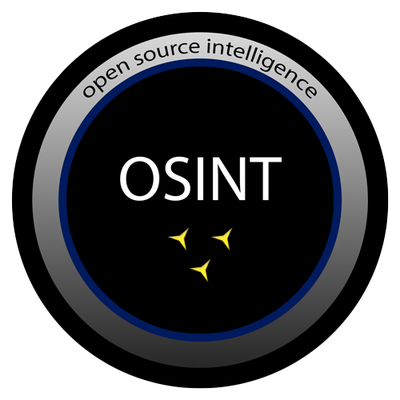How Government Agencies Are Leveraging Open Source Intelligence (OSINT) to Transform Their Operations

open-source intelligence (OSINT)
Open Source Intelligence (OSINT) has emerged as a game-changing capability for government agencies worldwide. By systematically collecting, analyzing, and acting upon publicly available information, agencies across different sectors are achieving their missions more effectively while optimizing resources and improving public safety.
The OSINT Revolution in Government
OSINT represents intelligence from publicly available sources, including social media, news outlets, academic publications, commercial databases, and government records. Unlike classified intelligence gathering, OSINT leverages information that anyone can theoretically access, but requires sophisticated tools and methodologies to process effectively at scale.
The transformation has been remarkable. Agencies that once relied heavily on traditional intelligence methods discover that much of the information they need exists in the open domain, waiting to be properly collected and analyzed. Modern OSINT operations utilize big data and natural language processing (NLP) technologies to collect, structure, and reveal events from news articles, press releases, and financial social media, enabling agencies to process vast amounts of information that would be impossible to analyze manually.
Real-World OSINT Applications in Current Geopolitical Analysis
The practical value of OSINT is demonstrated through contemporary geopolitical analysis, where agencies monitor developing situations in real-time. Recent OSINT-based analyses have covered critical events including India-Pakistan military escalations in May 2025, geopolitical shifts in the Arctic region, territorial disputes like the Guyana-Venezuela conflict over Essequibo, and anti-government protests in Turkey. These cases illustrate how agencies can track complex international situations using publicly available information sources.
For instance, during the most dangerous India-Pakistan military escalation since 2019, OSINT practitioners were able to uncover tensions through open-source media monitoring, providing decision-makers with critical situational awareness without relying on classified intelligence channels.
Law Enforcement Success Stories
Police departments and federal law enforcement agencies have found OSINT particularly valuable for criminal investigations and public safety operations. Social media monitoring helps track criminal networks, identify suspects, and prevent crimes before they occur. During major events or emergencies, OSINT allows real-time situational awareness by aggregating information from multiple public sources.
Counter-terrorism efforts have been revolutionized through advanced terror group mapping capabilities that systematically track organizational structures, communication patterns, and operational networks using publicly available information. These mapping tools help agencies visualize connections between individuals and groups while monitoring foreign influence mapping to identify state-sponsored activities and disinformation campaigns.
Financial crime risk assessment has become increasingly sophisticated, with agencies using OSINT to trace money flows through public corporate records, social media evidence of lifestyle inconsistencies, and cross-border M&A analysis to identify suspicious financial patterns. Modern threat detection systems now incorporate AI-powered intelligence to automatically flag high-risk transactions and behavioral anomalies across multiple data sources.
Emergency Management and Disaster Response
Emergency management agencies have embraced OSINT to enhance their disaster preparedness and response capabilities. By monitoring weather data, social media reports, and news sources, these agencies can better predict disaster impacts and coordinate response efforts.
Modern emergency response has been enhanced with earthquake monitoring systems that integrate seismic data with social media reports and satellite imagery to provide comprehensive situational awareness. Satellite data intelligence enables real-time assessment of disaster zones, infrastructure damage, and population displacement patterns that would be impossible to gather through traditional means.
During natural disasters, OSINT helps identify areas of greatest need by analyzing social media posts, news reports, and satellite imagery. This information enables more efficient resource allocation and helps prioritize rescue operations. The real-time nature of OSINT sources makes it invaluable when traditional communication infrastructure is compromised. Advanced risk signals processing allows agencies to anticipate secondary disasters and cascading effects that could compound emergency situations.
National Security Applications
Intelligence agencies have integrated OSINT into their broader intelligence frameworks, using it to complement classified sources and provide context for sensitive operations. OSINT helps analysts understand foreign political developments, economic trends, and social movements that could impact national security.
Modern national security operations leverage sophisticated political analysis tools to monitor government stability, election integrity, and policy shifts across multiple countries simultaneously. Geopolitical instability tracker systems provide early warning indicators of potential conflicts, regime changes, and diplomatic crises by analyzing news patterns, social media sentiment, and economic indicators.
Military activities monitoring has evolved to include comprehensive tracking of troop movements, equipment deployments, and training exercises through satellite imagery and open-source reporting. Military products patents analysis reveals technological developments and strategic priorities of foreign nations, while weapon innovation tracking helps agencies understand emerging threats and defensive capabilities.
Cyber Threat Intelligence platforms now monitor attack patterns, vulnerability disclosures, and threat actor communications across the dark web and public forums. Economic intelligence gathering provides insights into trade relationships, supply chain vulnerabilities, and potential economic warfare tactics that could impact national interests.
Advanced Technology Integration
Modern OSINT operations have evolved far beyond manual information gathering. Organizations now employ big data and NLP technologies to collect, structure, and analyze events covering more than 10,000 public companies globally, as well as customized lists of private companies and specific topics. This technological sophistication allows agencies to process information at unprecedented scales while maintaining analytical accuracy.
NLP-driven analysis has transformed how agencies process textual information, enabling automated extraction of key insights from news articles, social media posts, and government documents across multiple languages. AI-powered intelligence systems can now identify patterns, anomalies, and emerging trends that would be impossible for human analysts to detect manually.
The integration of artificial intelligence and machine learning has revolutionized how agencies approach OSINT. Satellite data intelligence platforms provide high-resolution imagery analysis for monitoring infrastructure changes, agricultural patterns, and environmental conditions. These automated systems can monitor multiple information streams simultaneously, identify patterns across vast datasets, and alert analysts to developing situations that require immediate attention.
ESG compliance monitoring has become increasingly important for agencies tracking corporate behavior, environmental risks, and governance issues that could impact regulatory compliance or create security vulnerabilities.
Immigration and Border Security
Immigration agencies use OSINT to verify information in visa applications, investigate document fraud, and identify security risks. Social media analysis helps confirm claimed relationships and activities, while cross-referencing public records can reveal inconsistencies in applications.
Border security agencies employ OSINT to monitor smuggling routes, identify trafficking networks, and understand migration patterns. This intelligence helps allocate patrol resources more effectively and anticipate emerging threats.
Key Success Factors
Agencies that have successfully implemented OSINT share several common characteristics. They invest in proper training for analysts, ensuring staff understand both the capabilities and limitations of open source information. They also implement robust verification procedures, recognizing that publicly available information requires careful authentication.
Technology infrastructure plays a crucial role, with successful agencies deploying automated collection tools, data analysis platforms, and visualization software to handle the massive volume of available information. Leading organizations have integrated their OSINT capabilities with major data platforms and marketplaces, enabling seamless access to structured alternative data alongside traditional intelligence sources.
Private Sector Partnerships and Data Access
Government agencies have increasingly recognized the value of partnering with private sector OSINT providers to enhance their capabilities. These partnerships provide access to sophisticated data collection and analysis platforms that can deliver structured intelligence on companies, financial markets, and geopolitical events. Such collaborations allow agencies to leverage cutting-edge technology without the need for extensive internal development.
Modern partnerships encompass a wide range of specialized intelligence products including terror group mapping, weapon innovation tracking, political analysis, and cyber threat intelligence. These collaborations provide access to economic intelligence platforms that monitor global trade patterns, supply chain disruptions, and financial market indicators that could signal emerging threats.
Foreign influence mapping capabilities help agencies track disinformation campaigns, state-sponsored activities, and attempts to manipulate public opinion across social media platforms and news outlets. Geopolitical instability tracker services provide real-time monitoring of political developments, protest activities, and regime stability indicators across multiple countries.
These partnerships also provide access to specialized monitoring capabilities, including military activities monitoring, military products patents tracking, and comprehensive risk signals analysis that complement traditional intelligence sources. Advanced threat detection systems integrated with AI-powered intelligence provide automated alerting and pattern recognition across multiple data streams.
Overcoming Implementation Challenges
While OSINT offers significant advantages, agencies face several implementation challenges. Information overload represents a major hurdle, as the sheer volume of available data can overwhelm analytical capabilities. Successful agencies address this through automated filtering, machine learning tools, and focused collection requirements.
Quality control remains essential, as open source information varies widely in reliability and accuracy. Agencies must develop robust verification processes and train analysts to assess source credibility effectively. Additionally, the dynamic nature of online information requires rapid collection and analysis to capture time-sensitive intelligence.
Building Analytical Capabilities
The most successful OSINT programs focus heavily on developing analytical skills rather than simply collecting information. This includes training analysts in advanced search techniques, social media analysis, and data visualization methods. Cross-training with traditional intelligence disciplines helps analysts integrate OSINT findings with other information sources.
Collaboration between agencies has also proven valuable, with information sharing agreements and joint training programs helping spread best practices and avoid duplicated efforts. Some agencies have established specialized OSINT units, while others integrate these capabilities throughout their analytical workforce.
Future Trends and Opportunities
As OSINT continues to evolve, agencies are exploring new applications and methodologies. Artificial intelligence and machine learning tools are enhancing the ability to process large datasets and identify patterns that might escape human analysts. Automated threat detection systems can monitor multiple sources simultaneously and alert analysts to developing situations.
The integration of OSINT with other intelligence disciplines is becoming more sophisticated, with agencies developing frameworks for combining open source information with classified intelligence to create more complete analytical products. This fusion approach maximizes the value of both types of information while maintaining appropriate security classifications.
Measuring Success and ROI
Agencies are developing metrics to evaluate their OSINT programs’ effectiveness, including response time improvements, cost savings compared to traditional intelligence methods, and successful case outcomes attributed to OSINT analysis. These measurements help justify continued investment and guide program improvements.
The return on investment for OSINT programs is often substantial, given the relatively low cost of accessing publicly available information compared to other intelligence collection methods. However, agencies must balance cost savings with the need for proper analytical capabilities and technology infrastructure.
Conclusion
The adoption of OSINT across government agencies represents a fundamental shift in how organizations approach intelligence and information analysis. Modern OSINT capabilities now encompass everything from tracking global corporate events and startup funding activities to monitoring geopolitical developments and cybersecurity threats in real-time.
As the volume and variety of publicly available information continues to grow, agencies that successfully harness these capabilities will maintain significant operational advantages. The key lies not just in collecting information, but in developing the analytical expertise and technological infrastructure necessary to transform raw data into actionable intelligence that directly supports mission objectives.
The evolution from traditional intelligence methods to sophisticated OSINT operations demonstrates how government agencies can adapt to the information age while maintaining their core mission focus. Those organizations that embrace this transformation, invest in proper training and technology, and develop strong partnerships with the private sector will be best positioned to meet the challenges of an increasingly complex global landscape.

